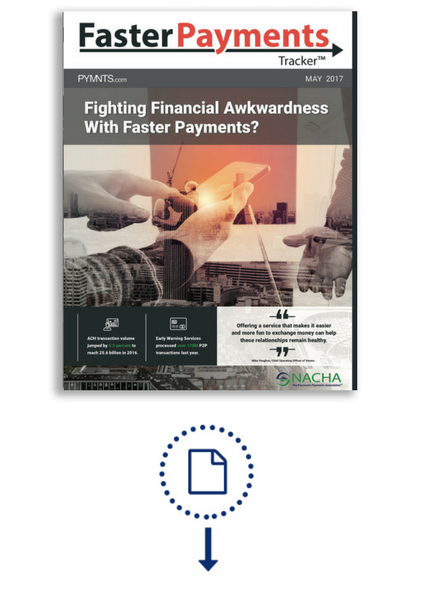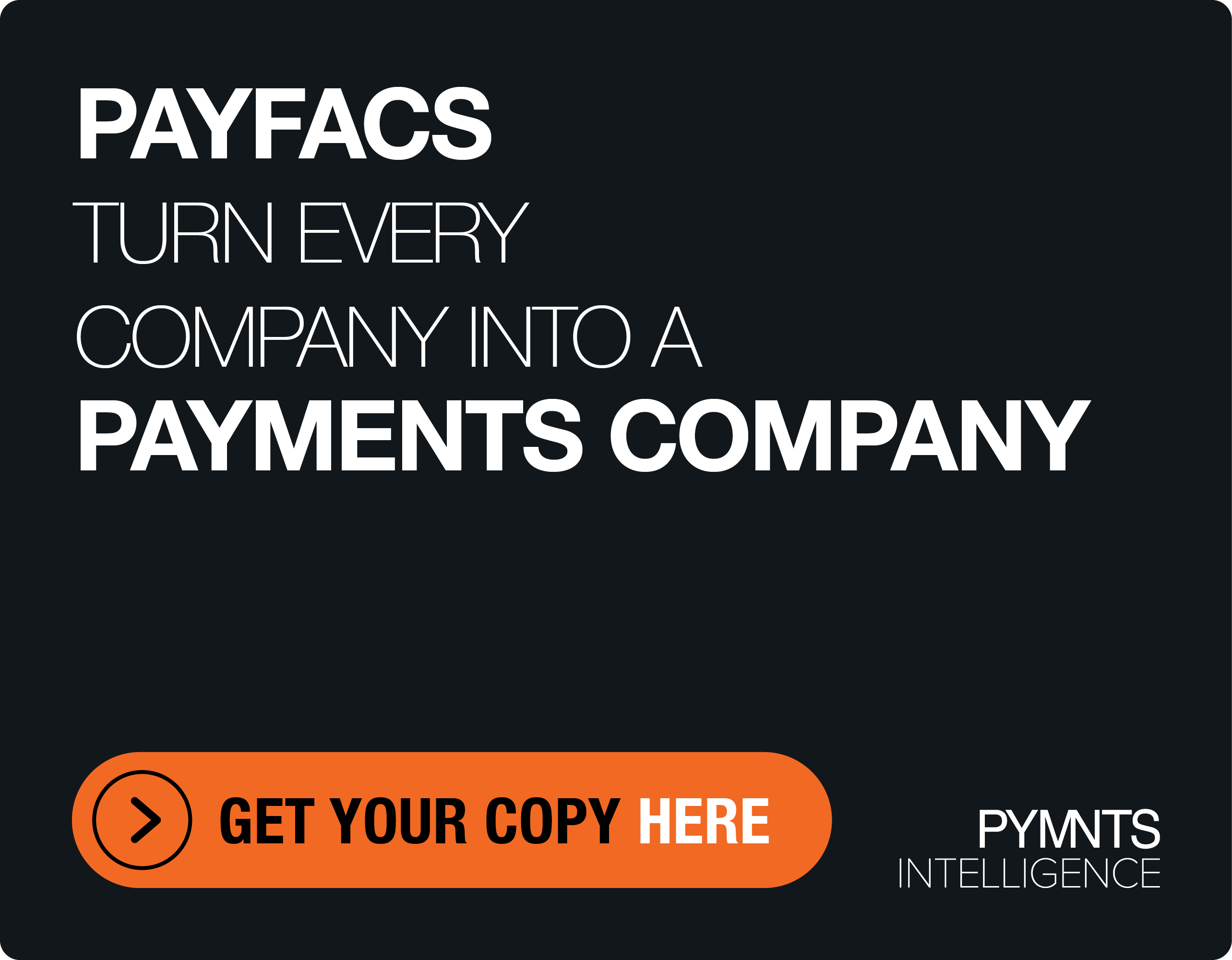Fighting Financial Awkwardness With Faster Payments?

While P2P transactions are gaining popularity, can they address the age-old discomfort of splitting bills among friends? For the latest issue of the Faster Payments Tracker™, PYMNTS caught up with Venmo’s COO Mike Vaughan about some of the “awkwardness of money” that P2P can create, and the role of social media — and faster payments — in overcoming them. Plus, the latest news about the faster payments solutions that are transforming the way businesses and individuals exchange funds.
 Consumers want what they want, when they want it, and digital technology in recent years has more than facilitated it. Be it an Uber ride, a music or video download or access to banking services, consumers expect instant gratification.
Consumers want what they want, when they want it, and digital technology in recent years has more than facilitated it. Be it an Uber ride, a music or video download or access to banking services, consumers expect instant gratification.
In the P2P space, this means consumers these days have the ability to settle bills and deliver money to friends and family, well, fast. This capability to quickly send money to other parties is gaining popularity. According to recent data, the Same Day ACH offering was used to make 1.8 million P2P transactions totaling $1.2 billion in Q4 2016, the first full quarter of Same Day ACH Credit availability.
Among the more popular players in the P2P space is Venmo, a mobile payment platform owned by PayPal. While Venmo has become a popular service for friends and family members to quickly exchange money, it soon will be getting more competition from more established financial players. Earlier this year, Bank of America became the first major financial institution to introduce Early Warning’s Zelle into its mobile app as a way to compete with Venmo in the P2P space.
Between Venmo’s services and new competitors like Zelle arriving on the scene, consumers have plenty of tools and solutions at their fingertips to help them send money requests to friends and families to split expenses. But for those who feel uncomfortable asking their friends to pony up their fair shares, whether it’s for a restaurant bill, rent or utilities — or for a ride home — Venmo may hold an advantage. The peer-to-peer mobile payment service offers a social media element aimed at making the exchange of money more fun for both sides of the transaction.
PYMNTS recently caught up with Venmo’s Chief Operating Officer, Mike Vaughan, about the service’s millennial appeal, how mixing social media and finances changes the payment dynamic and how payment trends are poised to change — thanks to faster payment solutions and offerings.
A Cure for ‘The Awkwardness of Money’?
When it comes to transacting money with friends the traditional and old-fashioned way, the experience can often be awkward and cumbersome. Having to search wallets and purses, or to go looking for the nearest ATM for cash, can get confusing, and someone typically winds up having to fork over more than their fair share. These uncomfortable moments can taint friendships.
“It’s [through] that awkwardness of money that Venmo is uniquely positioned to break down those walls,” Vaughan said.
Vaughan said Venmo — which, according to the most recent figures from parent company PayPal, processed $6.8 billion in Q1 2017 — tackles feelings of financial discomfort by giving consumers a more engaging option to settle debts, by mixing social media with finances. While other solutions exist that allow users to send money quickly, he said the Venmo platform goes a step further by allowing users to post the exchange in a social media feed that makes the experience more engaging and entertaining for both sides of the transaction. Users can also select an emoticon to indicate the purpose of the request. Vaughan said that adding this social media component to the dynamic makes P2P payment requests less uncomfortable.
“The social side of Venmo makes it less awkward,” said Vaughan. “Venmo is really breaking down some of the social norms around money that made it so awkward and complicated in the past.”
While other services, including Zelle and Splitwise, allow users to divvy up expenses, they lack a social media element that millennials have come to enjoy. By offering a faster payment solution that appeals to users who tend to be quick with a selfie, Venmo may have found a way to make swapping money more fun.
And, Vaughn said, these P2P faster payments enabled by offerings like Venmo are actually saving relationships — because unpaid debts can lead to conflict and resentment among friends or family members. Offering a service that makes it easier and more fun to exchange money can help these relationships remain healthy.
Onboarding Generations Old and New?
Venmo has a reputation for being popular among the millennial generation. But, Vaughan pointed out, the platform wasn’t designed specifically with the millennial generation in mind. The demographic group just happens to have been drawn to it most naturally thus far.
“Our focus was, this has to be a mobile-first solution,” said Vaughan. “The millennial generation is more in tune with doing things on their phone, so it’s the case that we have a lot of traction with that demographic.”
However, other groups are now starting to take notice of Venmo’s potential. Notably, Vaughan said, the parents of millennial users are starting to take an interest.
“We’re starting to see it jump generations,” he said.
Vaughan said that because millennials are using the Venmo platform to exchange funds between peers, the parents of these users are now turning to the service, because it offers a new way for parents to quickly send money to their kids at college — using a format that the students already find appealing. Parents can use the service to send money for free to their kids’ bank accounts, debit cards and prepaid cards. A 3 percent fee is applied to credit card transactions.
Getting younger players on board with services like Venmo, Zelle and others enables these users to act as “early adopters” of the systems. The more they use the products, the more likely they are to attract new users and “shape the habits of their parents and other older customers.”
Because Venmo functions as a social media platform, Vaughan isn’t surprised that generations beyond millennials are using it to send money.
“I think that’s kind of natural with this kind of network effect and this kind of platform,” he said. “You’ll start to see that continue to grow and escalate, where broader and broader groups are joining and becoming more comfortable with mobile payments in general.”
Adjusting to Faster Payment Changes
While Venmo might be popular among millennials and their parents to exchange money without any awkwardness, new players appear to be ready to stake their claim in the P2P space. The first of these players is Bank of America, which became the first major bank to introduce Early Warning’s Zelle feature as a competitor to Venmo through its mobile app in February. Another 18 banks have similar plans to integrate Zelle into their services.
But while new players and tools arrive on the scene, Vaughan appears confident that Venmo’s social media-like platform will help set it apart even as the faster payments field gets more crowded.
“There have always been different ways to send money,” said Vaughan. “Venmo didn’t fill a gap of something that other services weren’t already doing. The big part of Venmo is the experiences.”
He acknowledged that the arrival of new players will prompt the company to take steps to adjust and improve that experience for its users. These tools will help the company determine the best way to make sure its offering remains appealing to Venmo’s customer base.
“We’re just scratching the surface of the public’s comfort level with digital payments,” he said. “A little bit of rising water lifts all boats, but for us, we don’t see that as taking away from Venmo.”
Even as new players introduce their own P2P services to deliver consumers access to their funds when they expect it, the service that offers the more engaging user experience — one that utilizes emoticons — could stand apart from the crowd.
. . . . . . . . . . . . . . . .
TO DOWNLOAD THE MAY EDITION OF THE PYMNTS.COM FASTER PAYMENTS TRACKER™, CLICK THE BUTTON BELOW.
About the Tracker
The PYMNTS Faster Payments Tracker™, powered by NACHA, is your go-to resource for staying up-to-date on a month-by-month basis. The Tracker highlights the contribution of different stakeholders, including institutions and technology coming together to make this happen.

